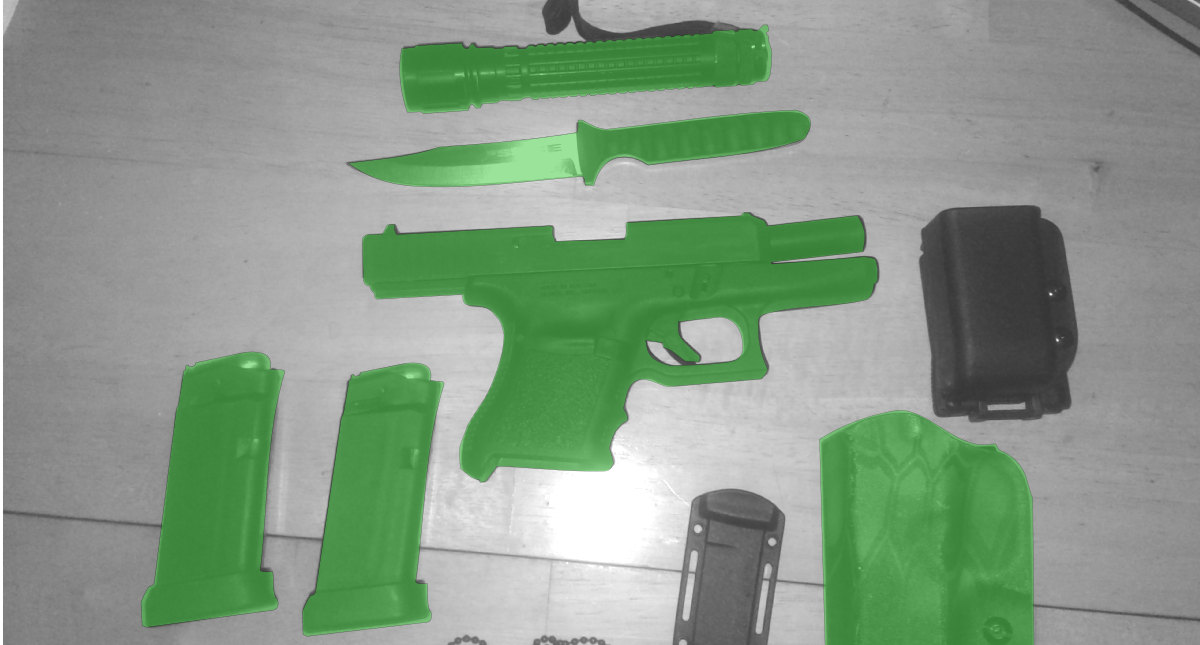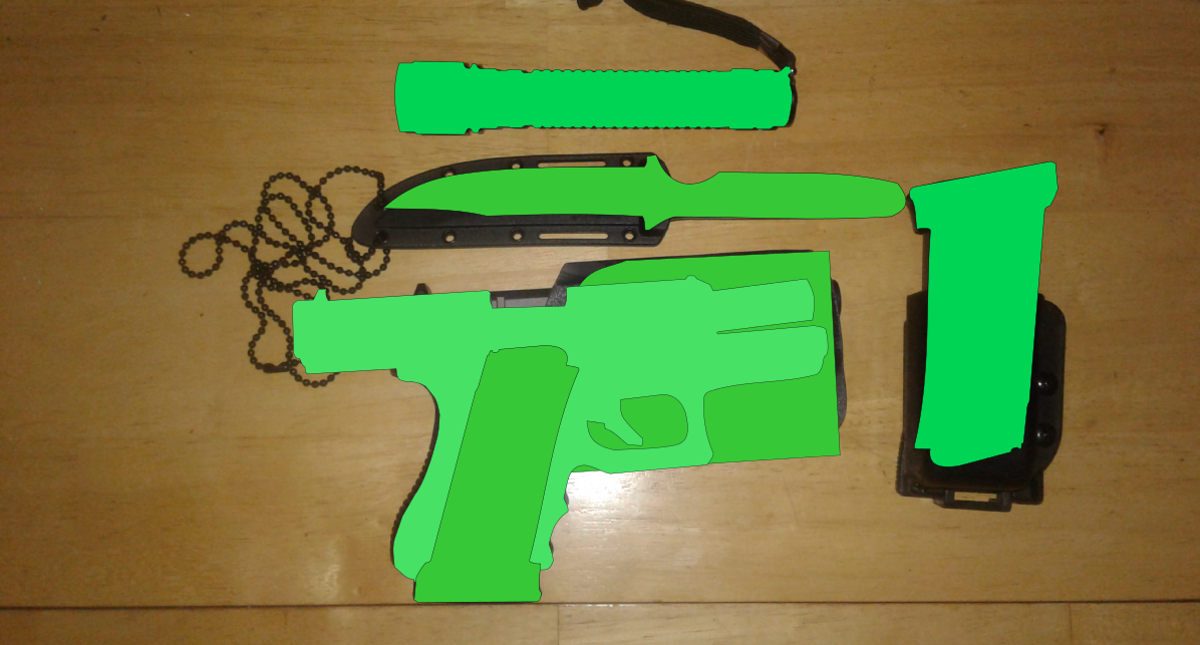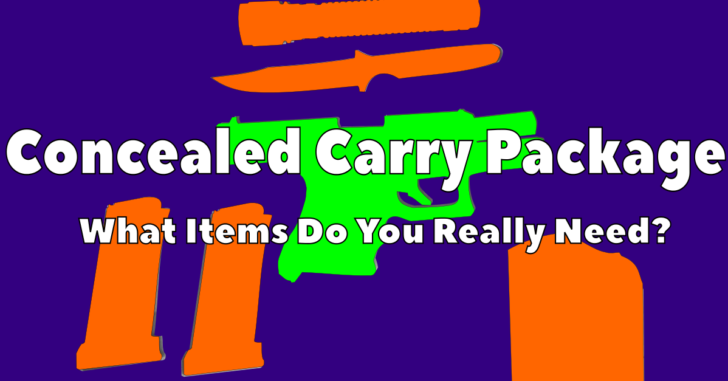When you show up to the gun store for the first time and pick up a concealed carry pistol, you may be disappointed to learn that without some other items, that pistol is going to be worthless. Yes, it sure looks intimidating sitting in that plastic case. Those magazines, empty, certainly do load and eject rather easily into the magazine well.
But carrying a concealed handgun is just a step in the process.
In this article, we’ll discuss the items you absolutely need, the items I recommend, and other considerations for your everyday carry setup.
Step 1: Gun & Permit
Before you leave the house, you need a gun. And, in most states, in order to carry that handgun concealed, you’re going to need a permit. The permitting process in each state varies widely — with some allowing you to carry without a permit and others requiring a lengthy process that includes mandatory training and fingerprinting.
Figure out the process, get the permit, and start carrying the gun.
Step 2: Figure Out Your Everyday Concealed Carry Rig
Now, we’re going to refer to all the items in your concealed carry setup as your ‘rig’. It’s a common term thrown around in the firearms community. It refers to not just the handgun but also what you carry alongside that gun.
I’m going to take the items I honestly carry every single day as a base template. Yours may vary wildly depending on your needs but I feel mine covers my basics.

My everyday concealed carry rig always includes the following:
- Concealed carry permit
- Concealed carry handgun
- One primary magazine
- One secondary magazine
- Inside the waistband holster
- Utility knife
- Emergency flashlight
My everyday concealed carry setup is very simple — no bells or whistles, no fancy gadgets or sharp looking items. My usual everyday carry handgun is a Glock 36. That’s a semi-automatic striker-fired pistol that typically holds six rounds of .45 ACP in each magazine.
Because it only holds six rounds, I carry a backup magazine. If you carry a revolver, you may want to hold onto a speed loader with at least one cylinder’s worth of ammunition.
For concealed carriers that use handguns loaded with more than six rounds, you may also want to consider a backup magazine.
Q: Why carry a spare magazine?
A: In the unlikely event you are in a defensive gun use scenario, you will probably want at least one fresh magazine you can load. Chances are good that the incident will be resolved some time within the first magazine but why take chances when you can tuck an extra magazine in your coat pocket?
And the last essential item I carry with me is an inside the waistband holster. I use a Lenwood Holsters IWB. It clips on inside the waistband, is relatively comfortable, and maintains great retention over the pistol.
Q: What the heck is retention?
A: Retention refers to the snugness of a handgun within its holster. The more snug a holster is, the less a pistol can move around when you do daily activities like jumping, sprinting, or squatting.
So to recap on essential items:
- Concealed carry handgun
- Primary magazine
- Secondary magazine
- Holster
If you stop right there, I feel you have at least the basics you need to address the day. However, that’s not where we’re going to stop.
Essential Extras: Why We Take The Extra Step
Okay, why do I have a picture posted of a knife and a flashlight if I didn’t list them as absolutely essential?
For me, a knife and an emergency flashlight are essential. They may not be essential for you.
Do I recommend always carrying a utility knife and a flashlight? Absolutely.
Does every concealed carrier have one of each? Probably.
Do they carry them everyday? I imagine quite a few do.
You know your day better than anyone else. For me, I’ve never needed my flashlight and knife for fighting but I have needed them quite a few times working around the barn or just doing daily activities. I carry these items with me because I have a need for them.
These items — an emergency flashlight and a knife — are things that may not necessarily help me in a fight but will certainly help me deal with everything else. More importantly, each can compliment and assist me in a defensive gun use situation if I so choose. They’re options.
In practice, I use my flashlight to check a tire with low air pressure, check to see if the cat is hiding under the barn, and any number of other things. However, if I need to use it to, say, scan the barn for intruders — it’s there.
The knife I have is great for opening boxes, occasionally tightening a loose screw, or carving a piece of jerky. If I’m stuck fighting in close quarters and can’t safely draw my gun — it’s there.
That’s the point of essential extras. These are tools you can find use of in your daily routine and can also compliment and help you in a real struggle for your life.

Many concealed carriers and gun owners have differing opinions as to what constitutes “essential extras”. Some would argue everything up to and including a first aid kit and body armor. Others take a bit more practical approach and just answer the question, “what do I need in an absolute emergency?”
Readiness and preparation are keys to success for everyday concealed carry. The gun, by itself, is just one tool in your arsenal in solving problems great and small. The real determination of success will come from what tools you have available and how you are able to adapt and overcome.

